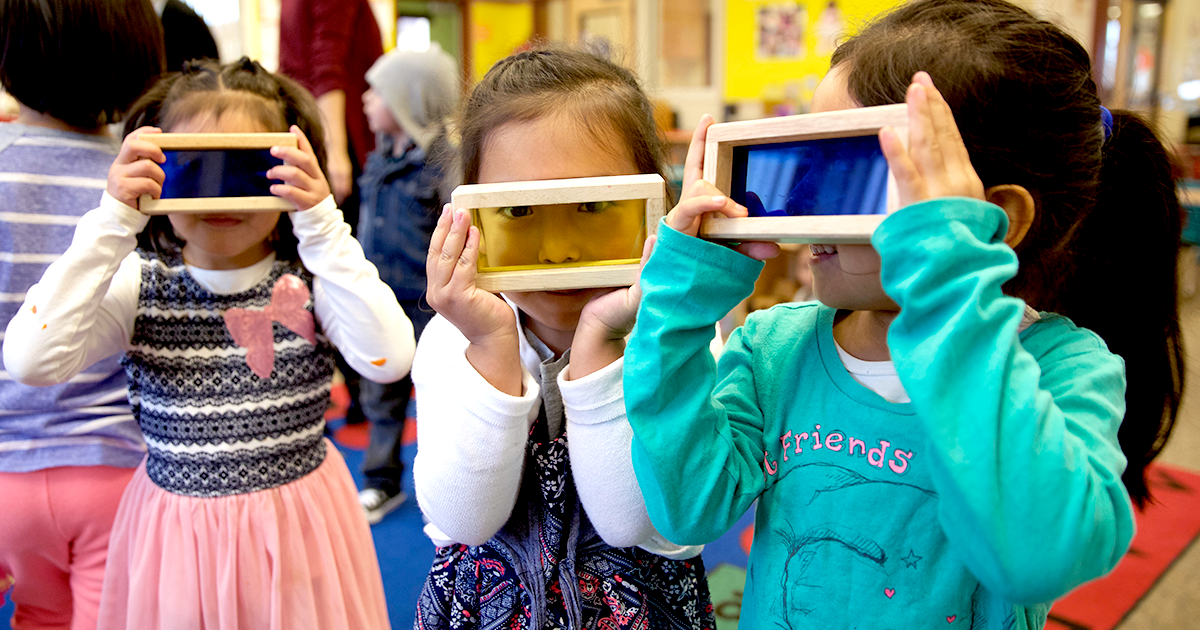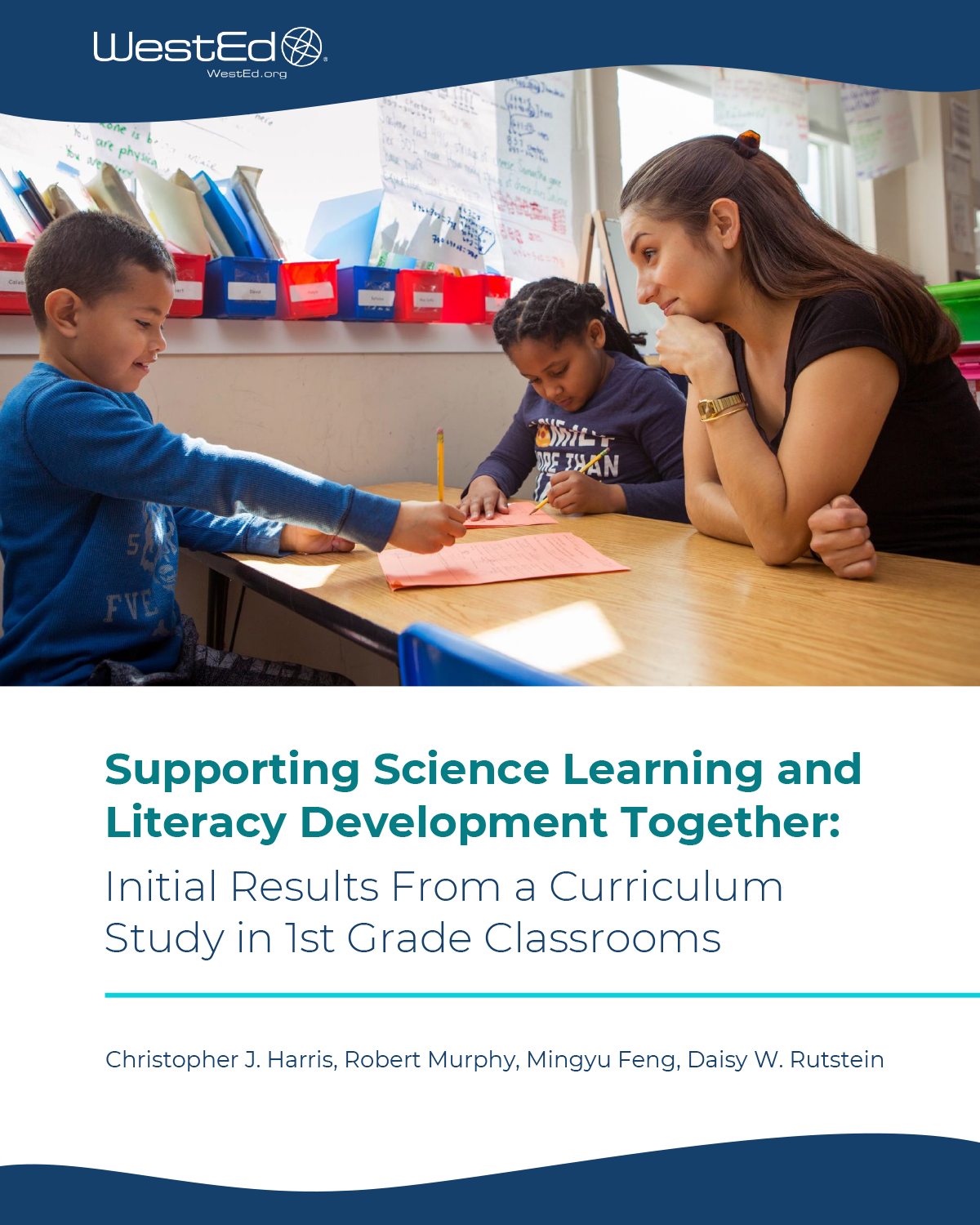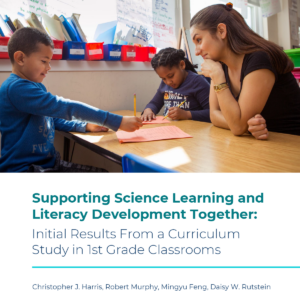Gaining a Foothold for Science in the Early Elementary Grades: Can Curriculum Materials Play a Role?
Posted on

By Christopher Harris and Mingyu Feng
Harris serves as the Senior Director of Research in Science and Engineering Education at WestEd, while Feng is the Research Director in Learning and Technology.
If the status of science instruction in the elementary grades could be described in one word, it would most likely be: undervalued.
For more than twenty years, science has been undervalued across the K–5 grades with the amount and quality of science instruction varying widely. For example, the findings of the National Survey of Science and Mathematics Education over the past two decades consistently show that science receives far less instructional time than other core subjects during the early grades. The unfortunate reality is that most young students do not have access to high-quality elementary science education in many parts of the U.S.
But that is changing. A Framework for K–12 Science Education and the Next Generation Science Standards (NGSS) have catalyzed the development of a new generation of curriculum materials for the elementary grades. Inspired by the Framework’s call that all students from the earliest grades onward must have the opportunity to learn and actively participate in science, these new materials are being expressly designed to meet the unique needs of teachers and students in elementary classrooms.
For instance, many of them use the high-leverage strategy of integrated science and literacy learning. This strategy may enable elementary teachers to spend more instructional time on science while simultaneously supporting young students’ literacy development in the context of science.
One example of the new generation of curriculum materials that are bringing science and literacy together is the Amplify Science K–5 curriculum, which received high marks for its NGSS design in a review by EdReports. Developed by the University of California, Berkeley’s Lawrence Hall of Science in collaboration with Amplify Education Inc., the materials aim to promote learning as emphasized by the Framework and NGSS. While these materials require teachers to spend more time on science, the day-to-day science lessons intentionally integrate science learning with students’ literacy development, with an emphasis on reading.
The unfortunate reality is that most young students do not have access to high-quality elementary science education in many parts of the U.S. But that is changing.
WestEd recently led an impact study of the Amplify Science program in 1st grade classrooms. In this study, we investigated the extent to which the curriculum supports young students’ three-dimensional learning as called for by the NGSS and their literacy learning related to reading and science language use. Three-dimensional learning refers to the process of students applying the three dimensions of disciplinary core ideas, science and engineering practices, and crosscutting concepts to make sense of phenomena or solve problems.
Our main research question was: What is the impact of the 1st grade curriculum on science learning and literacy outcomes in culturally and linguistically diverse school settings?
To answer our question, we conducted a randomized controlled trial involving 1st grade classrooms across 40 schools in three districts within a state that adopted the NGSS performance expectations. We randomly assigned each school to either the Amplify Science full-year curriculum or to a comparison group that implemented their regular classroom instruction and taught science as they typically would during the school year.
First grade teachers in both groups were tasked with providing instruction on the same science topics in physical science, life science, and Earth and space science and with following their district guidelines for meeting the NGSS performance expectations as outlined in their state standards.
At the end of the school year, we compared posttest scores of 1st grade students in schools that used the Amplify Science curriculum with those of 1st graders in comparison schools across four assessments. We found that students in classrooms that used Amplify Science materials achieved higher scores on two end-of year NGSS-focused assessments.
These same students slightly outperformed their counterparts in comparison classrooms on a standardized science assessment that covered general science knowledge and was distal to the NGSS. The results from a standardized reading assessment showed no differences in performance, indicating that students’ reading performance in the two groups were similar at the end of the school year.
Overall, the science learning results provide promising evidence that curriculum materials designed for the early grades to support NGSS instruction can enhance student learning of important three-dimensional learning goals found in state science standards.
The reading assessment findings are intriguing because they appear to suggest that teachers can teach considerably more science in the early grades using Amplify Science with some confidence that students’ reading scores will not be negatively impacted.
Prior research on the benefits of science and literacy integration has been well documented, but to date there have been relatively few studies in the elementary grades of science and literacy integration in the context of NGSS-designed curriculum materials. This study contributes to this emerging literature and is among the first randomized-controlled studies of widely available curriculum materials for the NGSS in K–2 classrooms.
Importantly, our findings provide evidence of the value of NGSS-focused science instruction for benefiting both science and reading. As Amplify Science and other new NGSS-designed materials become more widely used, it will be important to conduct further research to continue to build the evidence base for the complementary nature of science and literacy in the elementary grades. This important work will help us address the grand challenge of how we can build and sustain quality science education that is accessible to all students beginning in the earliest grades and beneficial for their current and future learning.
 To learn more about our study and the initial findings on student learning outcomes, see the WestEd research brief, Supporting Science Learning and Literacy Development Together: Initial Results from a Curriculum Study in First Grade Classrooms.
To learn more about our study and the initial findings on student learning outcomes, see the WestEd research brief, Supporting Science Learning and Literacy Development Together: Initial Results from a Curriculum Study in First Grade Classrooms.
Christopher Harris is Senior Director of Research in Science and Engineering Education at WestEd. He leads large-scale multiyear, multi-institutional research, development, and evaluation projects and has been involved in developing scalable approaches to address the NGSS through curricula and assessments. His research often involves collaborative work with districts and schools for the purpose of informing both research and practice.
Mingyu Feng is Research Director in Learning & Technology at WestEd. She studies the implementation and effectiveness of innovations in education, focusing on education technology. Her expertise includes the application of experimental and rigorous quasi-experimental methods and use of data-driven approaches to understand and support learning and instruction. She has led or co-led many large-scale studies in STEM.

